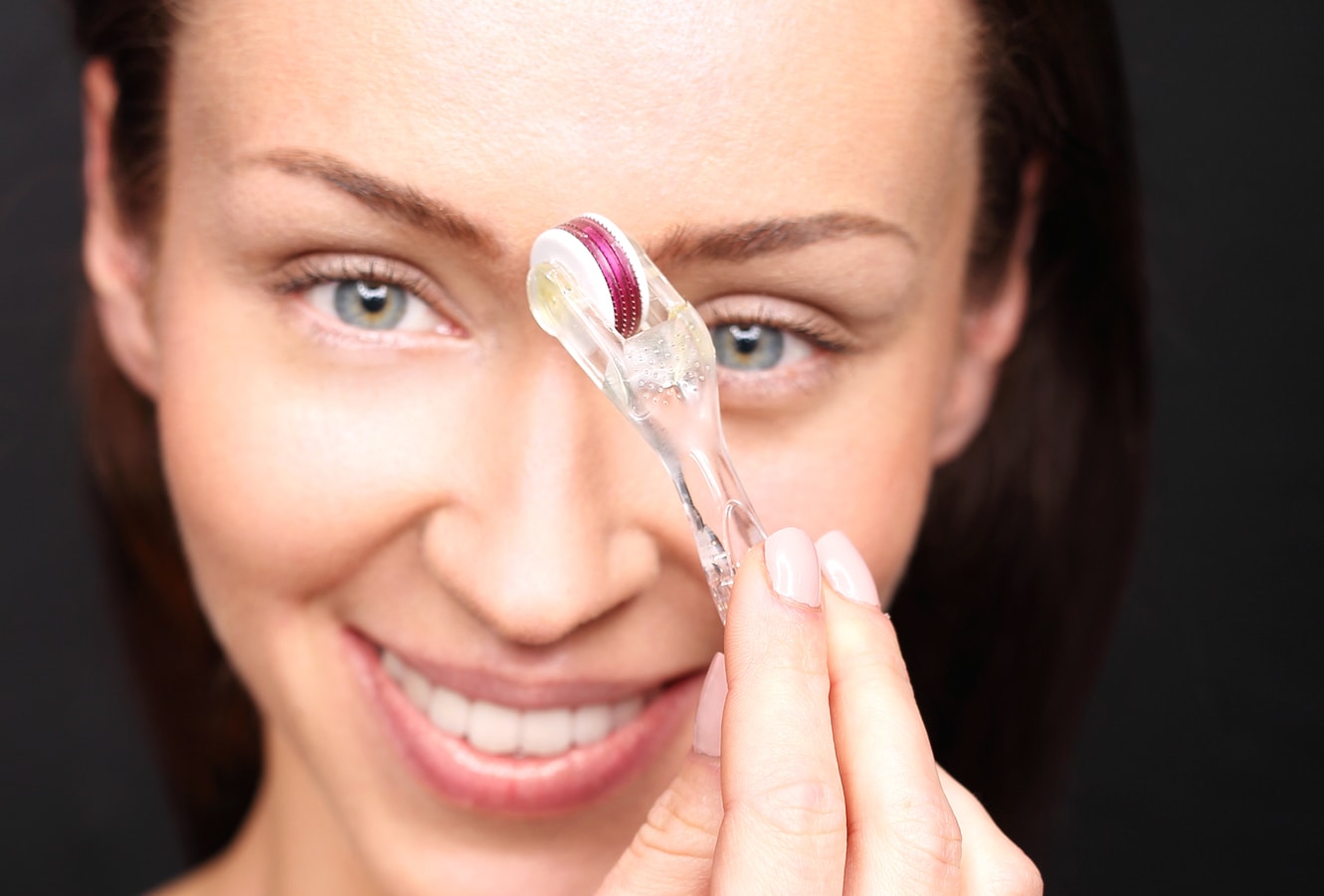
Microneedling, otherwise known as percutaneous collagen induction therapy, is a medical grade procedure to stimulate collagen production in the skin. It works by creating microchannels in the skin using very fine needles. These microinjuries cause the body to produce collagen and elastin which results in skin that looks smoother, firmer, and younger.
Various serums made for microneedling can be applied during and after treatment. These include hyaluronic acid, growth factors, peptides and autogenous platelet rich plasma (PRP) customized from a small amount of the patient’s own blood. PRP can be used for theoretically more collagen production and a quicker recovery. These fluids are absorbed deep in the skin through the microchannels created by the needling.
Microneedling can be used to help diminish fine lines, wrinkles, vertical upper lip lines, pigmentation, acne scarring, post traumatic scarring and stretch marks. It is suitable for all skin types as the procedure does not require the use of heat and light so there is less epidermal damage.
Microneedling can be performed with traditional dermal rollers or with newer generation automated devices. An example of such a device is the Eclipse Micropen Elite, which is a high speed medical grade device with disposable sterile tips. The whole device can be individually wrapped in a sterile plastic wrapper for safety. The depth of treatment can be adjusted and customized for each anatomic area up to 2.5mm. The microneedles move quickly and penetrate the skin perpendicularly which, theoretically, is less traumatic than a traditional dermal roller which enters the skin at a sloped angle. Other brands are Dermapen and Skinpen. Three passes are performed in different directions in areas around the face and under the eyes. The neck and décolleté can be treated as well. For more targeted areas such as scarring, there is a “stamping” technique which involves keeping the tip of the pen stationery and rotating it by 90 degrees.
With traditional dermal rollers, microneedles of various lengths can be used but they are not adjustable like the automated ones. DermFrac is a dermal roller that incorporates various serums into the skin with vacuum pressure. Microchannels are created at a depth of 250 microns (0.25mm).
In comparing other rejuvenation modalities, chemical peels vary in depth of penetration and strength to treat fine lines and photodamage. Superficial peels have a faster recovery but may be less effective and a series of treatments are recommended. The deeper peels are more effective and may need longer downtime. Caution is needed with darker skin types to avoid hyperpigmentation. Dermabrasion can be used for marked acne scarring. It treats the entire outer layer of the skin and has a longer downtime. Botox is a neuromodulator for dynamic wrinkles (i.e. crow’s feet and scowl lines) and has no downtime. It is not used to treat pigmentation and static lines.
A common misconception regarding microneedling is that there will be a lot of discomfort since needles are being used. Numbing cream can be applied for 15-20 minutes, which should make the treatment quite comfortable. Patients also think there will be a lot of blood during treatment. There will be some pinpoint bleeding, but not anything significant.
This is highly dependent on geography and the areas treated. In Manhattan, for example, microneedling on the face (with pre-made serums) may range from $400-$700 and by adding PRP (Platelet Rich Plasma), the price would go up to as much as $900-$1200 per treatment.
Microneedling may have limited effects on skin with excessive laxity or deep wrinkles. These issues may be best managed with dermal fillers, deep peels or ablative lasers, blepharoplasty or facelift. Short-term side effects of microneedling include redness that may last for 1-3 days. There can also be long-term side effects, albeit very rare, if regular skin care products are applied on the skin immediately after the procedure. Patients are advised not to use their home skin care products for at least 24-48 hours after microneedling.
Microneedling is not recommended for patients with a tendency to develop keloids, eczema and psoriasis, collagen vascular diseases and any other chronic diseases. Patients suffering from these conditions should consult and seek alternative aesthetic recommendations from their physician. Those with a history of herpes simplex virus (HSV) infection will be given a prescription for valacyclovir prior to their treatment.
The skin may feel tight after the treatment. The slight redness is like a mild sunburn that can last for 1-3 days depending on the depth of needle penetration. Patients should avoid direct sun exposure for at least 4 days before and after the treatment to decrease the risk of pigmentation. Sweaty activities must also be avoided in the first 3 days after the procedure.
If PRP application is to be performed, less post-procedure care is needed compared to traditional microneedling. Hyaluronic acid serum that is safe for use after microneedling can be applied for tightness of the skin. Physical sunscreen is recommended at about day 3 after the procedure. If microneedling without PRP is performed, only products that are safe for use after microneedling such as a Dermal Recovery Kit are recommended. This kit includes a gentle cleanser, healing serums and a physical sunblock.
Tightening of the skin is seen right away especially with the PRP treatment. A series of 3-6 treatments are recommended at 4 weeks interval for best results. Touch ups can be performed as needed usually every year or so.
Microneedling is an excellent minimally-invasive treatment for fine lines, wrinkles, pigment and scarring with little downtime and risk. It can be used in darker skin types as well. The use of platelet rich plasma (PRP) may help additional collagen to be created and may allow for a quicker recovery.
Written by Cosmetic Town Editorial Team - AA
Based on an exclusive interview with Dr. Debra Kroll in New York, NY